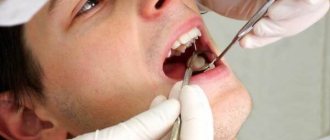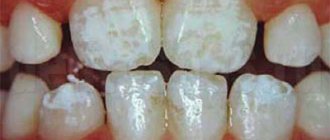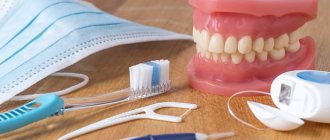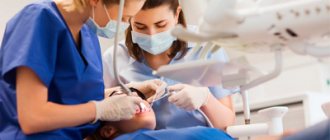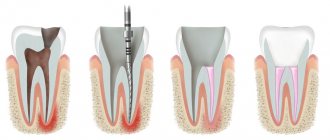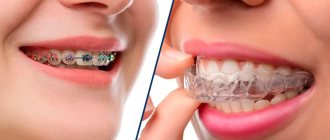The lips are skin-muscular folds, the structure of which is divided into three parts - cutaneous, intermediate and mucous. The pink areas, the so-called vermilion border of the lips, are covered with a transparent stratum corneum, which is exposed to high temperatures, chemicals, and ultraviolet radiation. They contain 100 times more nerve fibers than the fingertips. Therefore, a lip burn is always accompanied by burning, acute pain and itching. The injury causes severe discomfort and makes eating difficult. Delayed or incorrect treatment leads to infectious inflammation.
Why is a lip burn dangerous?
Lips are one of the most unprotected areas of the body, subject to the destructive effects of chemicals, high temperatures, and radiation. Burns are often accompanied by damage not only to the skin, but also to the oral mucosa. Tissue injury leads to:
- throbbing pain;
- burning;
- redness;
- blistering;
- detachment of the mucous epithelium.
Failure to promptly treat wounds with antiseptics can lead to tissue infection. After healing, noticeable scars and white spots remain on the lips.
Symptoms and classification of burn severity
Treatment and first aid will be carried out depending on the severity of the burn received. There are three degrees of oral burn:
1st degree : the easiest. It manifests itself in the form of moderate pain, tissue redness and sometimes slight swelling. After eliminating the elevated tissue temperature, it goes away on its own and does not require further treatment.
2nd degree: moderate burn severity. Symptoms of the lesion: the appearance of tissue defects, plaque, tissue insensitivity at the site of the lesion. Intense pain requires anesthetics and is often accompanied by an increase in body temperature. If there is a burn not only to the mouth, but also to the larynx, then hospital treatment cannot be avoided.
3rd degree : the most severe. The entire epithelial layer to the deeper layers of the skin is deeply affected. This severity of burns is typical for chemical burns caused by hydrochloric acid and concentrated alkali.
Types of burns
Burns lead to the destruction of skin cells and mucous epithelium that covers the inner surface of the lips. Injury occurs when contacting:
- chemicals - acids, alkalis, lime;
- high temperatures - boiling water, hot objects;
- radiation - ion or light radiation.
The greatest danger is chemical burns. In 35-40% of cases they are complicated by infectious inflammation, which prevents the tissues from healing. Damaged lips with bleeding wounds worsen the quality of life. A person cannot eat properly or communicate with others. Severe burns cause problems breathing and sleeping.
Thermal
Indicators of burn injuries in the world range from 250-350 cases per 100 thousand people. Moreover, about 30% of all thermal burns are accompanied by damage to the lips. The cause of injury is the thermal factor. Contact with liquids and objects whose temperature exceeds 42°C inevitably leads to the destruction of skin cells.
Young children and women are more susceptible to injury. In 39% of cases, the mucous membrane of the hard palate, gums and tongue are simultaneously damaged. Burns are caused by:
- hot objects;
- boiling oil;
- hot water, etc.
Based on the depth of damage, superficial and deep burns are distinguished. The higher the temperature of the liquid or hot object, the more serious the lip injury. Sometimes not only the skin or mucous membranes are damaged, but also the muscles with the subcutaneous fat layer.
Solar
The spectrum of solar radiation has an ultraviolet part, which is electromagnetic waves with lengths from 10 to 400 nm. Short-wave UV rays in the range from 100 to 280 nm have a detrimental effect on the skin and mucous membranes. They destroy protein components, causing 1-3 degree burns.
Ultraviolet irradiation is possible when sunbathing or visiting solariums. Signs of sunburn include:
- burning;
- swelling;
- peeling of the skin;
- pain when touched.
At the first sign of sun injury, you should stop using the solarium or stop sunbathing.
Chemical
Chemical burns can occur from contact with irritating substances, which include:
- iodine;
- lime;
- ammonia or medical alcohol;
- concentrated soda solution;
- battery electrolytes;
- aggressive detergents, etc.
The degree of damage to the skin and mucous membranes of the lips depends on three factors:
- reagent concentration;
- duration of contact with the chemical;
- presence of cracks on the lips.
In 84% of cases, chemical burns are accompanied by death of the affected tissue. When acids come into contact with the skin, dark brown scabs form. But the greatest danger comes from burns from alkalis. They penetrate deep into the skin and fatty tissue, causing 3rd degree burns.
The danger of chemical injuries lies in the toxic effects of certain substances. The penetration of some of them into the blood leads to poisoning of the body, as evidenced by:
- diarrhea;
- dizziness;
- weakness in the body;
- pale skin;
- excessive sweating, etc.
Failure to provide assistance in a timely manner leads to even greater damage to the lips, oral mucosa, esophagus, etc.
Ray
Radiation burns are often a consequence of radiation therapy in the treatment of malignant tumors in the maxillofacial area. Ionizing radiation spreads to healthy areas of the mucous membrane and skin. The following symptoms indicate radiation injury:
- redness of lips;
- swelling;
- numbness;
- erosion.
Over time, the affected areas of the mucous membrane become cloudy and lose their natural shine. As the radiation dose increases, a sticky coating forms, which indicates tissue necrosis. Damage to the salivary glands leads to excessive salivation. Over time, it gives way to dryness.
Why does it hurt so much
The skin is the largest organ: 4−6% of the total body weight. It contains up to 82% water and a third of the total blood volume. There are 2 million nerve endings in the skin, 1.5 million of them are pain receptors.
Temperatures above 44 °C destroy skin proteins - the integrity of the cell membranes is disrupted and water from the cells goes into the space between them. This can be illustrated using an egg as an example. It contains approximately 73% water, 13% protein, 12% fat and minerals. When cooked, the proteins in the cell membrane are destroyed and folded - water comes out. The same thing happens to the skin, only the water goes into other tissues. Therefore, swelling occurs.
Then platelets stick together in the vessels of the dermis and clog the lumen. The blood supply to the burned area is reduced, which can lead to complete tissue death if help is not provided in time. A burn also leads to the release of substances into the blood that provoke inflammation.
Degree of damage to skin and mucous membranes
Clinical manifestations of burns and methods of their treatment depend on the depth of tissue damage.
It is very important not to apply oily products to such burns, since oils only promote the proliferation of pathogenic microorganisms.
Each degree corresponds to specific symptoms that determine the severity of the damage:
- First. The cells of the outer layer of skin and mucous epithelium on the inner surface of the lips are destroyed. It manifests itself as moderate swelling, redness, pain or burning. A mild burn can be treated for no more than 3-5 days with regenerating and antiseptic agents.
- Second. All layers of the skin are damaged up to the basement membrane, which is adjacent to the dermis. The second degree is accompanied by swelling, redness, and blisters. Symptoms disappear within 10-14 days with adequate treatment.
- Third. The epidermis, superficial or even all layers of the dermis are destroyed. The damaged area turns bright red and blisters form on it. Due to the burn of sensory receptors, painful sensations are dulled.
- Fourth. Cells of all layers of the skin die, down to the subcutaneous layer, which consists of adipose and connective tissue. The muscles and bones of the lower or upper jaw are damaged.
With deep injuries, the mucous membrane swells and turns outward. Because of this, the red border of the lips visually resembles the mouth of a fish.
What to do if burns appear after snus
First of all, you need to completely stop using it. Absolutely any treatment will be useless if negative effects continue. It will take some time for the body to heal wounds: it depends on how long the person has been harming his health with a dangerous habit.
Tips to speed up burn healing:
- the use of local anti-inflammatory drugs: herbal decoctions (chamomile, calendula, sage) and gels;
- a diet with temporary restriction or exclusion of sour, spicy and salty foods that have an aggressive effect on the mucous membrane;
- You should carefully brush your teeth and eat, avoiding further injury to damaged tissue.
Burns after snus are not the worst consequence of its use.
Expert opinion: Just one pad contains 50-150 mg of nicotine, and can be a lethal dose for a child.
The following consequences of attachment to a fashionable habit are also dangerous for the body (and especially for children):
- deterioration of cognition, memory, concentration;
- possible development of cancer of organs most susceptible to nicotine toxins: oral cavity, gastrointestinal tract, pancreas;
- violation of reproductive functions in women and men;
- disruption of the heart, blood vessels, hypertension and diabetes.
At the first manifestations of damage to the mucous membranes, it is necessary to “quit” the harmful hobby of snus. If someone close to you is addicted to nicotine, seek help from a drug treatment clinic: specialists will help you get rid of the problem.
First aid algorithm
If lips are injured by chemicals or boiling water, it is necessary to provide emergency assistance to the victim. The speed of tissue healing depends on the timeliness and correctness of actions.
Algorithm for providing first aid:
- Washing. For any type of burn, you need to wash the damaged areas of your lips with running water. The procedure should take at least 10 minutes.
- Neutralization of the reagent. If the burn is caused by alkalis, they are neutralized with a weak solution of citric acid. If acid gets on the lip, use a soap or 5% soda solution.
- Anesthesia. To eliminate the burning sensation, take an anesthetic drug - Nimesulide, Ketorolac, Nurofen, etc. To enhance the analgesic effect, the victim is given 1 tablet of Spazmex, Romazulan or Spazmalgon.
For burns caused by quicklime, do not wash your lips with water. In such a situation, use a 20% sugar solution. Cotton pads are moistened in it and applied to injured skin and mucous membranes. Further therapy depends on the degree of damage to the lips. If there is severe drooling, throbbing pain and mucosal detachment, consult a doctor.
When to call an ambulance
“For extensive burns. In the first degree - only redness of the skin - you can seek medical help if the pain and swelling increases,” says Svetlana Mukhortova.
Maria Fadeeva also recommends seeing a doctor if:
- burned skin of the face, fingers and toes, feet, joints, genitals
- The burn area is larger than the child's palm
- the victim is less than 5 years old
- body temperature rises, redness increases, sensitivity disappears at the burn site
- there is a suspicion of a burn to the respiratory tract or eyes - this is possible after fires, falling into a fire, inhalation over hot steam
How to treat a lip burn: restorative therapy
Treatment of burn injuries is aimed at eliminating inflammation and restoring tissue integrity. Superficial burns are treated with topical medications at home. If the cells of the dermis and subcutaneous fat are destroyed, the victims are hospitalized in a burn center.
Pharmacy products
Anti-burn ointment, gel or spray will help reduce pain and inflammation in the affected areas. Treatment for superficial burns includes:
- Pantestin is a wound-healing gel with dexpanthenol, which has anti-inflammatory properties. Apply exclusively to the skin in a thin layer three times a day.
- Rescuer is a cream with regenerating, softening and antiseptic action. Prevents skin from cracking when crusts form on the lips.
- Panthenol is a hygienic lipstick with provitamin B5, which stimulates scarring of the skin. Contains shea butter, therefore it has a softening effect on burned tissues. Use no more than 4-5 times a day.
- Levomekol is an antimicrobial agent with wound healing and anti-inflammatory properties. A compress with ointment is applied to the burned areas of the lips three times a day.
- Levosin is a combined antimicrobial ointment that accelerates the exfoliation of dead tissue. Prescribed for purulent inflammation of the lips, non-healing ulcerations.
To treat the inner surface of the lips, solution antiseptics are used - a weak solution of tannin or furatsilin. Pain is relieved with non-narcotic analgesics - Tempalgin, Ibuprofen, Baralgin.
Traditional methods
Alternative medicine is used to speed up metabolism in the skin, increase local immunity, and disinfect the oral mucosa.
As a concomitant treatment, too hot dishes, as well as spicy, salty, smoked and spicy foods, which slow down the wound healing process by irritating the mucous membrane, are excluded from the patient’s diet.
For burn injuries of the lips the following are used:
- Chamomile decoction. 1 tbsp. l. herbs are poured into 250 ml of water and boiled for 10 minutes. Rinse with the strained broth every 1.5-2 hours.
- St. John's wort decoction. 10 g of raw material is poured into 300 ml of water and boiled for 5-7 minutes. Moisten gauze or cotton pads in the decoction and apply to the lips for 30 minutes 4-5 times a day.
- Burdock and plantain. Burdock root and plantain leaves are crushed and mixed in equal proportions. The pulp is wrapped in sterile gauze and applied to the lips three times a day for 20 minutes.
- Ointment with oil. Chalk is mixed with olive oil until a creamy mixture is obtained. Apply to the damaged area 3-4 times a day.
Sea buckthorn oil is used to disinfect and soften the mucous membranes of the lips. It is recommended to use the product until the tissues have completely healed.
In conclusion
Most often, the symptoms of sunburned lips are minor and can be treated effectively at home. For quick relief, begin treatment immediately at the first sign of sunburn. Symptoms include redness, irritation, dryness and swelling of the tissue.
The easiest way to avoid sunburn is to use lip balm with SPF 30 outdoors and reapply it every hour. Avoid the sun between 10:00 and 14:00.
If you do get sunburned lips, be sure to drink plenty of water to replenish the depleted reserves in your body. For immediate relief, you can apply a cold compress and take a pain reliever or antihistamine. Relieve irritation and dryness with moisturizer, lip balm, or aloe vera gel.
For more severe burns, you can purchase an over-the-counter product such as hydrocortisone cream.
What is prohibited to do
Burns of thermal and chemical origin are accompanied by swelling and the appearance of blisters. Crusts form in the burned tissues, tightening the skin. Incorrect treatment often leads to complications, so doctors do not recommend:
- puncture the bubbles;
- touching lips with dirty hands;
- cauterize wounds with alcohol;
- use compresses with tinctures;
- Treat burns with egg white or yolk.
Excessive drooling is a sign that you need to urgently call a doctor at home.
Self-medication for 3rd degree burns is dangerous due to purulent inflammation and phlegmon.
Actions for a throat burn
In fact, it is a difficult scenario to imagine when smoking. However, there are still cases of thermal burns to the throat from cigarettes. First of all, for treatment you need to drink cool water in small sips, which should not be icy under any circumstances. Next, you should rinse the mouth with an anesthetic, for example, a solution of lidocaine or novocaine 0.25%.
Thanks to these actions, further spread will be stopped, swelling will be relieved and painful symptoms will go away. You need to pay attention to symptoms in the first 48 hours after starting treatment. Usually during this period the therapy produces a positive effect. If this does not happen, then you must urgently go to the hospital.
Prevention
In 85% of cases, lip injuries occur due to careless handling of chemicals and hot liquids. To avoid getting burned, you need to take precautions:
- move detergents out of the reach of children;
- use a protective mask when working with chemicals;
- apply sunscreen to your lips while tanning or visiting a solarium;
- drink non-hot tea, the temperature of which is maximum 40°C;
- mark containers with aggressive chemicals;
- Do not open bottles with reagents with your teeth.
It is recommended to keep medications with dexpanthenol (Pantestin, Depantol, Pantoderm) in your home medicine cabinet in case of a burn. Correct provision of emergency care prevents deepening of the wound and purulent complications.
When to call a doctor
Even household use of hot oil can lead to disastrous consequences. Doctor's help is necessary in the following cases:
- A child was injured. Children's skin regenerates faster, however, the pain experienced by a baby, especially one who cannot talk about it, is terrible. Panic and chaotic actions will not add any benefit.
- Mucous membranes are affected. Eyes, mouth, throat, genitals.
- The burn area is larger than the victim's palm.
- Pregnancy. The leading physician must assess the potential danger to the mother and fetus.
- The advanced age of the victim.
Timely first aid and the participation of a specialist are the key to successful healing of a burn from boiling oil.
First aid kits with the required medications must be available at production facilities. Timely replenishment is the responsibility of the manager. This article is for informational purposes only, please consult your doctor for details!

